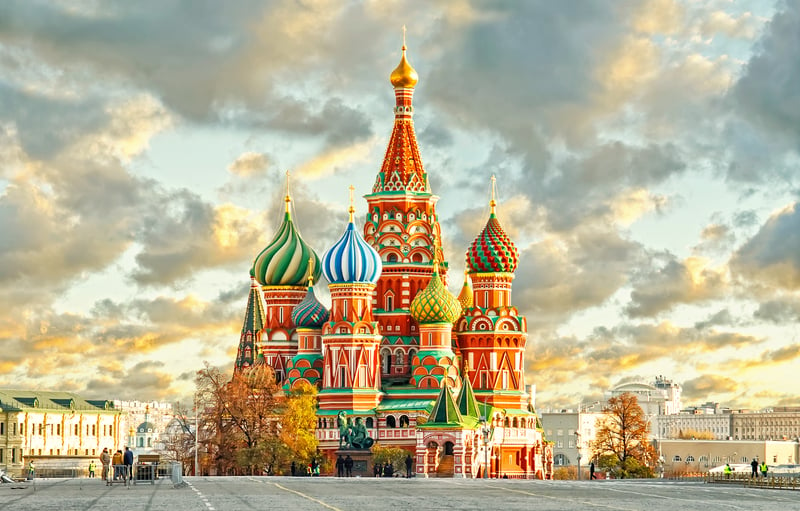 Innovative architecture has drawn travelers from all over the world for centuries. Today, architecture travel, or ArchiTravel, is an enriching part of a global travel lifestyle. We are drawn to the architectural marvels that exemplify human beings' hard work, ingenuity, and creativity. From the ancient Egyptian pyramids and the beautiful Parthenon in Greece to the more modern marvels of the Chrysler Building in New York City and Dubai’s Museum of the Future; impressive architectural wonders span time, space, and culture.
Innovative architecture has drawn travelers from all over the world for centuries. Today, architecture travel, or ArchiTravel, is an enriching part of a global travel lifestyle. We are drawn to the architectural marvels that exemplify human beings' hard work, ingenuity, and creativity. From the ancient Egyptian pyramids and the beautiful Parthenon in Greece to the more modern marvels of the Chrysler Building in New York City and Dubai’s Museum of the Future; impressive architectural wonders span time, space, and culture.
Each of these structures is unique and awe-inspiring in its own way, with intricate architectural details and iconic design elements. They leave their mark, a representation of a certain time and place as a record in the history books. Whether you're admiring these architectural wonders of the world up close or taking in their beauty from a distance, they will leave you in awe of human ingenuity and skill. Here is your very own ArchiTravel itinerary of some of our top picks from both the ancient and modern world.
Ancient World Architecture
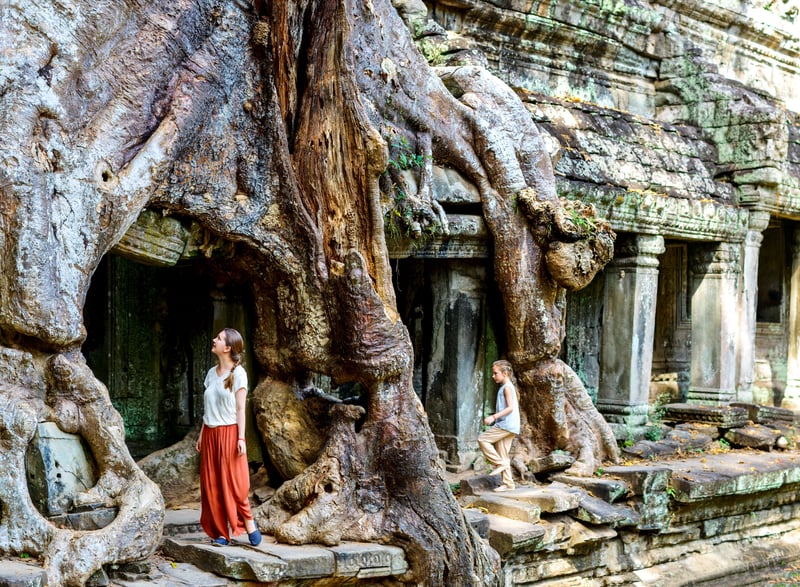 Incredible structures date back to ancient Egypt, Greece, and Rome in the west, Jordan, China in the east, and the Inca Empire in the south. Visiting such historically significant structures plays an excellent role in worldschooling for traveling families.
Incredible structures date back to ancient Egypt, Greece, and Rome in the west, Jordan, China in the east, and the Inca Empire in the south. Visiting such historically significant structures plays an excellent role in worldschooling for traveling families.
While there are several notable examples, including the Leshan Giant Buddha, the Great Wall of China, and the Seven Wonders of the Ancient World, we will focus on just a few of the most famous.
Great Pyramid of Giza - Cairo, Egypt
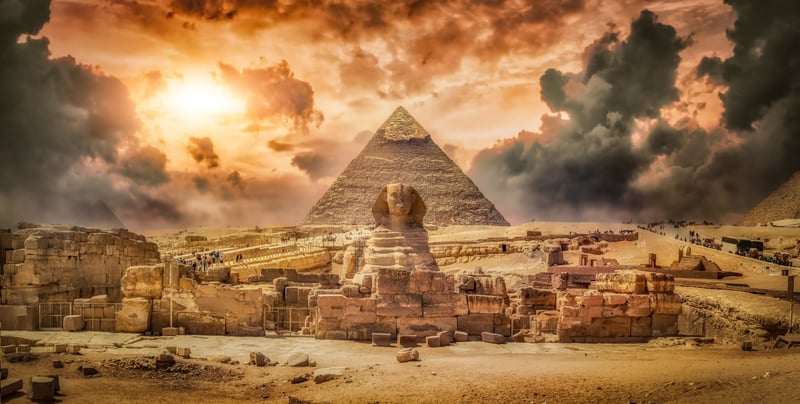 Arguably the most famous of ancient architectural wonders, the Great Pyramid of Giza still stands as a modern-day phenomenon. The only one of the Ancient Wonders of the World to survive largely intact today, the pyramid was built in the early 26th century BC. Composed of several million tons of granite transported to the site from over 500 miles away, it remains a mystery how the Egyptians built the pyramid without modern technology. Even with today's cranes, trucks, tractors, and helicopters, it would be a struggle to construct a stone structure of such proportions and staying power, and the fact that all of this was accomplished some 4,500 years ago is so mind-boggling that it has become mystical.
Arguably the most famous of ancient architectural wonders, the Great Pyramid of Giza still stands as a modern-day phenomenon. The only one of the Ancient Wonders of the World to survive largely intact today, the pyramid was built in the early 26th century BC. Composed of several million tons of granite transported to the site from over 500 miles away, it remains a mystery how the Egyptians built the pyramid without modern technology. Even with today's cranes, trucks, tractors, and helicopters, it would be a struggle to construct a stone structure of such proportions and staying power, and the fact that all of this was accomplished some 4,500 years ago is so mind-boggling that it has become mystical.
Theories abound as to how the construction was executed, from an ingenious ramp system to assistance from aliens (though the Egyptian government is quick to deny any credit to extraterrestrials for their architectural wonder). Aliens or ramps, there is no denying the Great Pyramid of Giza invokes both wonder and amazement.
The Ancient City of Petra - Southern Jordan
.jpg?width=800&height=533&name=shutterstock_1257310975%20(1).jpg)
Rather than being constructed from outside materials like the rest of the structures in this list, the ancient city of Petra is carved into a vibrant rose-colored sandstone cliff face in Al Khazneh. While this prehistoric site was once a thriving trading center and the capital of the Nabataean Empire from 400 BC to 106 AD, it was mostly abandoned by the 8th century and remained lost to the Western world for over 1,000 years (earning it the nickname ‘The Lost City’) until it was ‘rediscovered’ in 1812 by the intrepid Swiss explorer Johann Ludwig Burckhardt.
Amazingly, only 15% of the ancient city has been uncovered, with 85% underground and still untouched. In 1985, the Petra Archaeological Park was declared a UNESCO World Heritage site, and in 2007 was named one of the New Seven Wonders of the World. Today, millions of tourists hike through the rugged mountains and deep canyons of southwestern Jordan to see this ancient architectural wonder with their own eyes.
The Colosseum - Rome, Italy
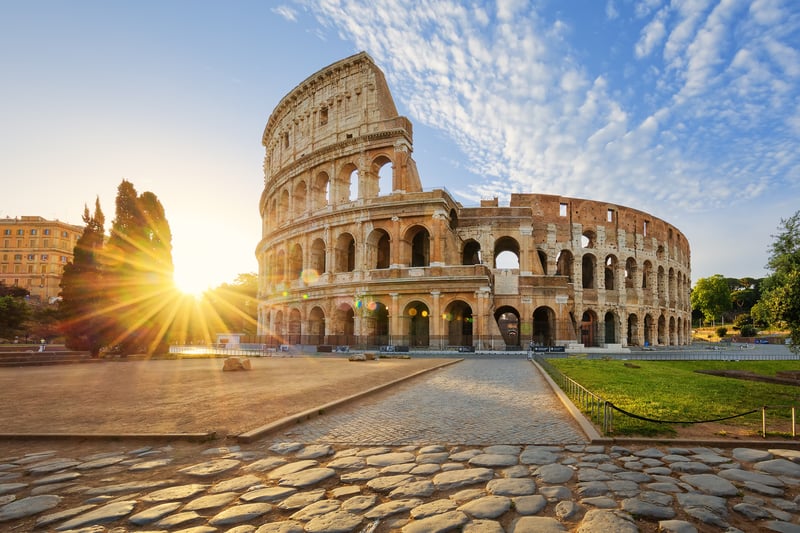 The Colosseum is the largest and the most famous amphitheater of ancient Roman architecture, standing 50 meters high, 156 meters wide, and 190 meters long. Prominently featured in its engineering is the Roman Arch, one of the foundations of Rome's architectural mastery (and quite possibly the root of our modern word for ‘architecture’). Its invention allowed for larger construction projects across the ancient world, including bridges and aqueducts. The design of the arch made it possible to support massive amounts of weight above it, which allowed the Romans to build the Colosseum so high, arch atop arch, and it still stands today as a symbol of Italian pride.
The Colosseum is the largest and the most famous amphitheater of ancient Roman architecture, standing 50 meters high, 156 meters wide, and 190 meters long. Prominently featured in its engineering is the Roman Arch, one of the foundations of Rome's architectural mastery (and quite possibly the root of our modern word for ‘architecture’). Its invention allowed for larger construction projects across the ancient world, including bridges and aqueducts. The design of the arch made it possible to support massive amounts of weight above it, which allowed the Romans to build the Colosseum so high, arch atop arch, and it still stands today as a symbol of Italian pride.
The Taj Mahal - Uttar Pradesh, India
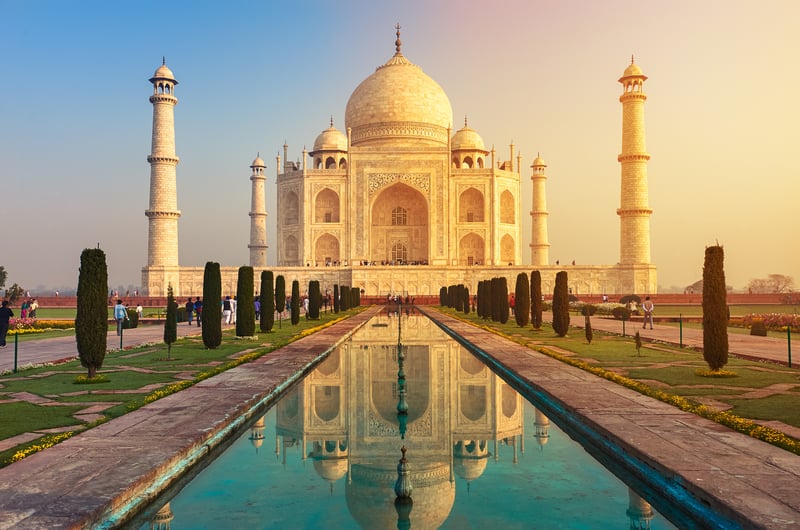
The Taj Mahal is perhaps the most famous mausoleum complex and awe-inspiring temples in the world. Commissioned by the emperor Shah Jahan for the tomb of his favorite wife, Mumtaz Mahal, it is considered the premier example of Mughal architectural marvels; blending Indian, Persian and Islamic styles. While various architects of the period have been linked to the plans, the chief architect was likely Ustad Ahmad Lahawri, an Indian of Persian descent.
Construction began in 1632, with more than 20,000 workers employed from India, the Ottoman Empire, and Europe to complete the mausoleum by 1639. Incredibly, almost the entirety of the Taj Mahal is built with white marble, including the palatial stone stairways, which causes it to seemingly change color as it reflects hues according to the sun's intensity or moonlight. In 1983 the Taj Mahal was designated a UNESCO World Heritage site and attracts millions of tourists yearly.
The Blue Mosque - Istanbul, Turkey
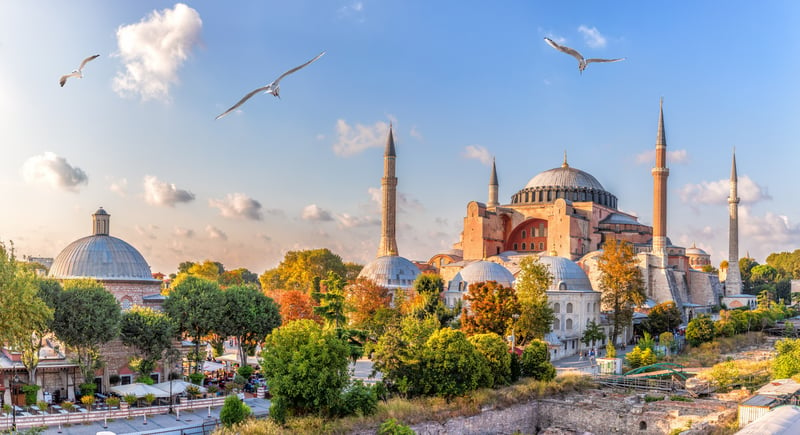
Also known as the Sultan Ahmed Camii (‘Sultan Ahmed Mosque’), this extraordinary work of architecture is one of the most majestic mosques from the Ottoman Empire in Turkey. Built between 1609 and 1616 under the instruction of Sultan Ahmed the First, it was designed to show imperial strength. Architect Sedefkâr Mehmed Ağa's vision for the mosque was that it would surpass the neighboring mosque Hagia Sophia in aesthetics and grandeur, and many today would agree that Ağa more than achieved his aim, with the result being arguably the most beautiful mosque in the world.
It is known as the Blue Mosque because over 20,000 handmade ceramic Iznik tiles were used to decorate the interior. They feature many different tulip, rose, lily, and carnation designs, which are well-lit by 260 windows giving the interior a blue hue.
This immense temple also stands out from the rest because of its six minarets (towers) instead of the standard two to four of most of the city's mosques. It is believed architect Ağa misheard the sultan's decree that there should be altın minaret (“gold minarets”); instead, he thought the sultan said altı minaret (“six minarets”). Easy mistake to make! Nonetheless, such a mistake only adds to the distinction of the city's largest religious monument.
Modern Architectural Wonders

Guggenheim Museums - Worldwide
The Guggenheim museums are dedicated to innovation and contemporary art, and their unique designs exemplify this, being extraordinary works of art around the world themselves. There are currently four Guggenheim museums around the world, although we will just focus on New York and Bilbao for their exceptional design.
New York City Guggenheim Museum, USA
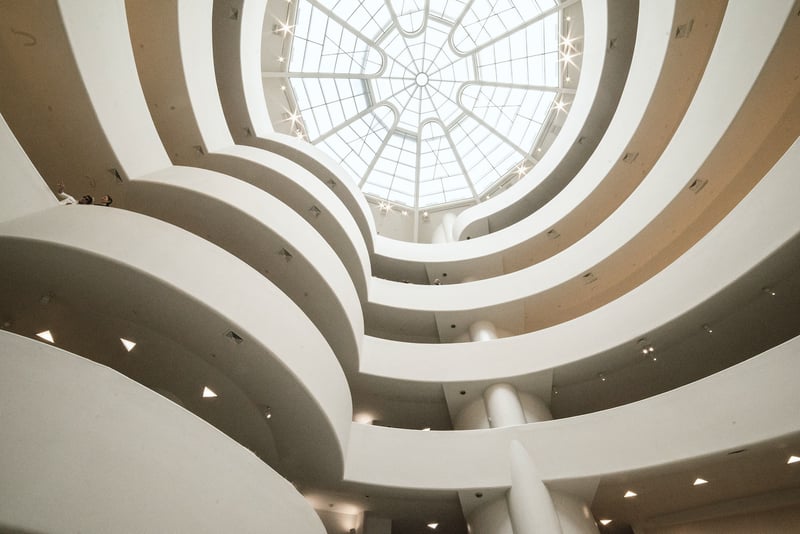 The Guggenheim Museum in New York was designed in 1943 by one of modern history’s most renowned architects, Frank Lloyd Wright. The museum's curator, Hilla Rebay, commissioned him with the instructions, "I want a temple of spirit, a monument!" The result is one of the most timeless and celebrated works of architecture in the United States today. Wright's inverted ziggurat design, with its spiral ramp leading to a domed skylight, continues to attract and thrill visitors worldwide.
The Guggenheim Museum in New York was designed in 1943 by one of modern history’s most renowned architects, Frank Lloyd Wright. The museum's curator, Hilla Rebay, commissioned him with the instructions, "I want a temple of spirit, a monument!" The result is one of the most timeless and celebrated works of architecture in the United States today. Wright's inverted ziggurat design, with its spiral ramp leading to a domed skylight, continues to attract and thrill visitors worldwide.
Guggenheim Museum Bilbao, Spain
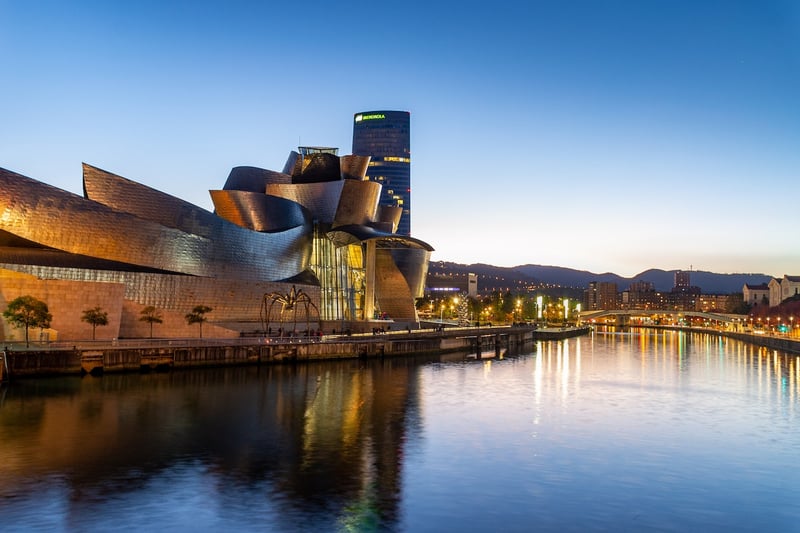
Designed by Frank Gehry, another famed contemporary architect, the Bilbao Guggenheim Museum in Spain is an incredibly unique structure made from limestone, glass and titanium. When it opened in 1997, it was immediately lauded as the most important building of its time. It attracted so much international attention that it reignited Bilbao’s economy and kickstarted a global trend for innovative museum designs.
The most recent Guggenheim museum is still under construction in Abu Dhabi, UAE with current plans aiming for completion by 2025. Not surprisingly, Frank Gehry is recommissioned as the lead architect. Gehry is using the surrounding desert landscape as inspiration for an inventive 21st-century museum design experiment. Gehry’s aim is to define a new approach to the visitor experience for viewing contemporary art. For our part, we just can’t wait to see the building!
La Sagrada Familia - Barcelona, Spain
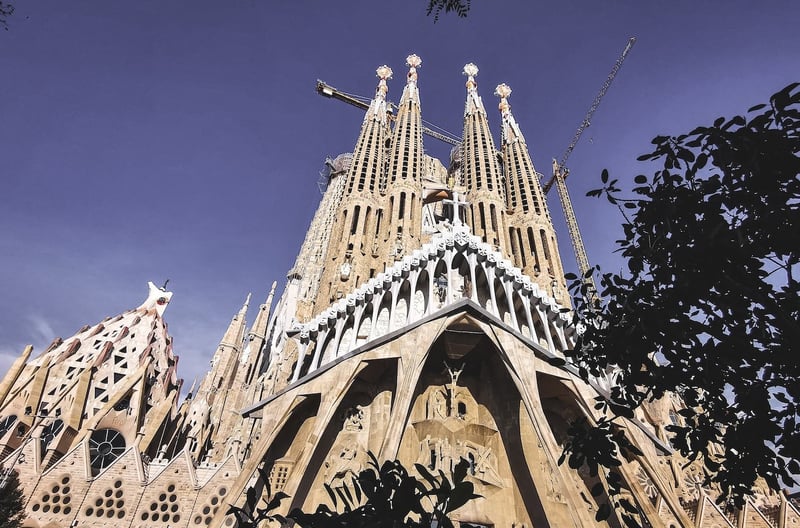
Officially known as Basílica i Temple Expiatori de la Sagrada Família (“Expiatory Temple of the Holy Family”), La Sagrada Familia is Barcelona's most famous landmark. Designed by the famous Catalan architect Antoni Gaudí, it attracts an average of over 2.8 million visitors per year and is one of the world's most admired cathedrals.
Impressive by any standard, La Sagrada Familia also holds the distinction of being the largest unfinished Catholic church in the world. While construction began in 1882, it is still ongoing (hence its place on our “modern architecture” list). Since Gaudí’s death in 1926 (with less than 25% of the project completed), a series of delays (including an arson attack from anarchists, the Spanish Civil War, and the COVID-19 pandemic) have significantly slowed its progress, but luckily with modern technology (aided by detailed plans left by Gaudí), the project continues today.
When the church is finally completed, it will feature three imposing facades (Nativity Facade, Passion Facade, and Glory Facade) representing stages in the spiritual journey of Jesus Christ. Gaudi's design calls for 18 spires in total, with only 8 so far constructed. Upon completion, it will be the tallest church in the world.
CCTV Headquarters - Beijing, China
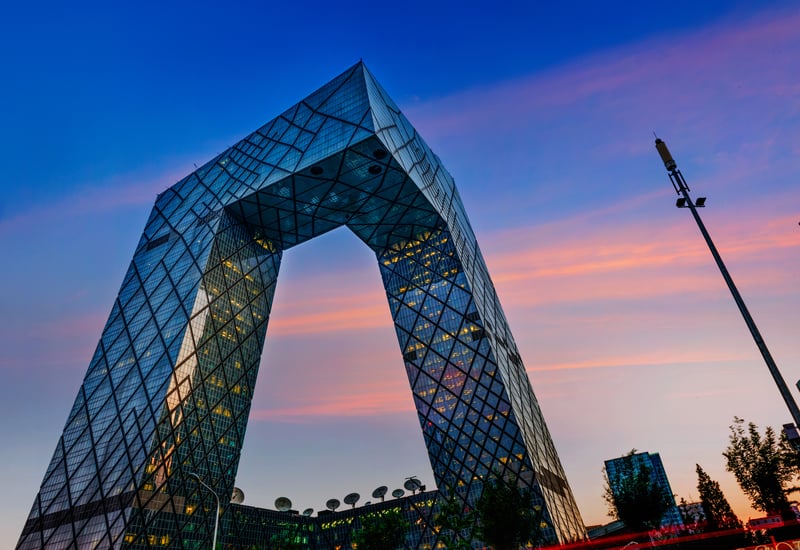
China's all-watching Big Brother, CCTV headquarters, is one of this century's most groundbreaking skyscraper designs. We like the CCTV Headquarters in Beijing for its boldness in breaking the rules of modern architecture. Dutch architect Rem Koolhaas and his studio OMA believed the form of most skyscrapers had become clichéd and it was time to reimagine the design of tall buildings. Their design for CCTV HQ did exactly that.
Instead of building two separate towers or one sky-high tower, the building comprises two towers that lean against each other connected by a third horizontal tower. The result (affectionately referred to by locals as “Big Pants”) is what Koolhaas describes as a “three-dimensional cranked loop” whereby occupants can move unimpeded throughout the whole building.
The design is so groundbreaking that CCTV HQ is considered a significant part of deconstructivism: a movement that encourages radical freedom of form, breaking away from conventional design.
Sydney Opera House - Sydney, Australia
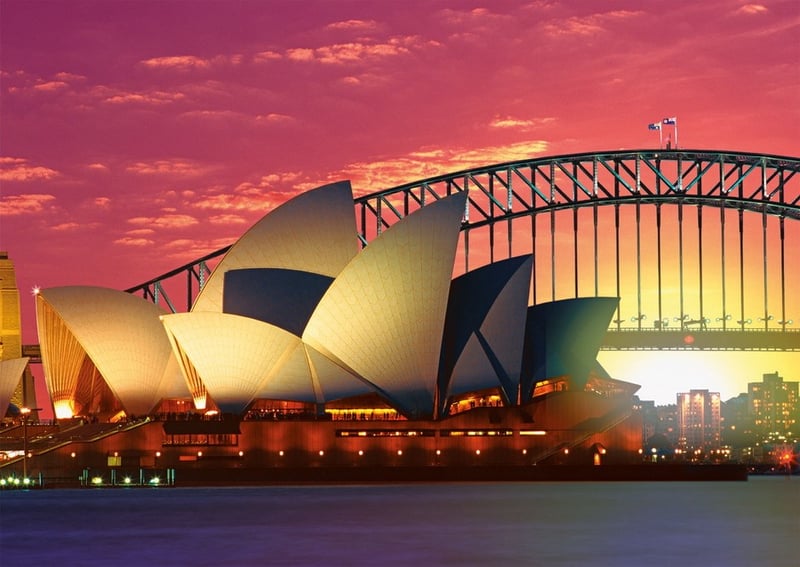
In 1956, the city of Sydney launched a worldwide competition for the design of its new opera house. Danish architect Jørn Utzon's design was initially rejected, not once, not twice, but three times! His vision for a curved, sculpture-like building on the edge of Sydney Harbour was out of the ordinary of modernist architecture at that time. Nonetheless, he emerged victorious from 232 competitors and won £5,000 for his effort.
Construction started in 1959 and took 14 years and 10,000 workers to complete. Utzon was forced to retire due to a cost blowout and return home without seeing his masterpiece completed, which sparked local protests.
However, in 1999, after extensive negotiations, Utzon agreed to develop guidelines for future alterations to the Sydney Opera House. As a result, some of Utzon's original visions for the interior have been realized after two years of renovations, including the new concert hall. Featuring multiple performance spaces and innovative technology, the opera house functions not only as a space for theater, ballet and opera but can now host the world’s leading pop, rock and electronic artists.
Despite the many setbacks, the Sydney Opera House remains of the most timeless and phenomenal architecture pieces.
Burj Khalifa - Dubai, UAE
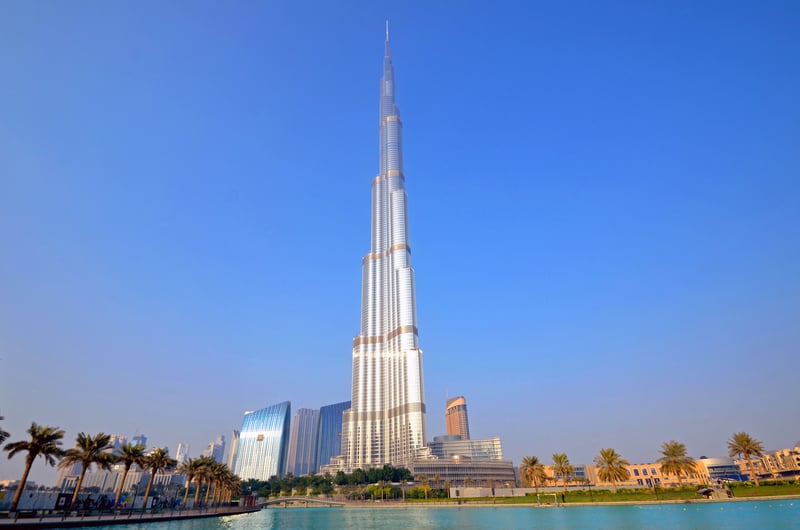
The Burj Khalifa is the world's tallest structure, standing at a mind-boggling 830 meters in height, towering over rest of the city's sparkling skyscrapers. Located in Dubai, the booming metropolis that appears to have sprung up in no time, the skyscraper is admired not only for its sheer scale and exceptional engineering but also for its visually appealing architectural design.
Built by Emaar Properties PJSC, one of the largest real estate companies in the world, Burj Khalifa has the highest observation deck on earth with a stunning aerial view of Dubai, the Arabian Gulf, and the desert. The innovative design also features the elevator with the longest travel distance globally.
In an astounding feat of project management and delivery, construction for the Burj Khalifa began in January 2004, and just 1,325 days later, the world's tallest free-standing structure was complete, becoming one of the newest architectural wonders of the world. We suggest enjoying the gleaming building from a distance, up close, and from the sky deck... if you dare.
About Storylines
Storylines is creating a community of global citizens to live aboard a luxury residential ship while traveling the world. One of our guiding principles is discovery as together we explore and learn about the world's cultural attractions, such as those discussed above. If this aligns with your own values and you are a travel enthusiast, check out our website for more information.


